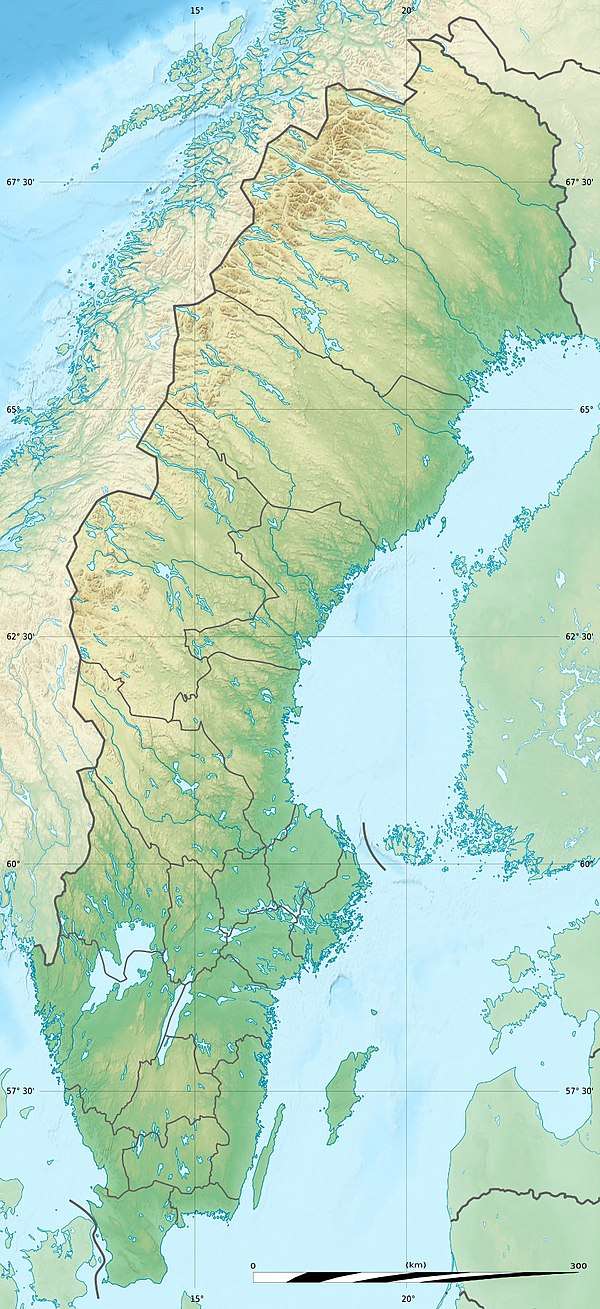Engelsberg Ironworks
Engelsberg Ironworks (Swedish: Engelsbergs bruk) is an ironworks in Ängelsberg, a village in Fagersta Municipality in Västmanland, Sweden. It was built in 1681 by Per Larsson Gyllenhöök (1645-1706) and developed into one of the world's most modern ironworks in the period 1700–1800. It is listed as a UNESCO world heritage site since 1993.
| UNESCO World Heritage Site | |
|---|---|
 | |
| Location | Ängelsberg, Fagersta Municipality, Sweden |
| Criteria | Cultural: (iv) |
| Reference | 556rev |
| Inscription | 1993 (17th session) |
| Area | 9.596 ha (23.71 acres) |
| Coordinates | 59°58′00″N 16°00′30″E |
 Location of Engelsberg Ironworks in Sweden | |
Name
Engelsberg Ironworks is named after Englika. Englika, who was born in Germany, began producing iron in Engelsberg in the 14th century. [1]
History
The history of iron production in the region dates back to at least 13th century. The local peasants both mined the ore and produced the iron using primitive furnaces.[2]
In the end of the 16th century more modern production methods were introduced in Engelsberg and production volumes increased substantially in the following decades.[2]
Description
The preserved buildings include a manor house, the inspector's house and the smelting house with a blast furnace.[3]
UNESCO World Heritage Site
Engelsberg Ironworks is a UNESCO World Heritage Site. It was added to the list in 1993. [4] The UNESCO comments were:
Sweden's production of superior grades of iron made it a leader in this field in the 17th and 18th centuries. This site is the best-preserved and most complete example of this type of Swedish ironworks.
Gallery
- The mansion with wings
- The mansion from the garden side
- The west wing
- The two slag stone towers
- The forge
- The old office
- The archives of Axel Johnson Group
- The new office
.jpg) The furnaces
The furnaces- The dam and blast-furnace
- The old barn
- A road at Engelsberg iron works
References